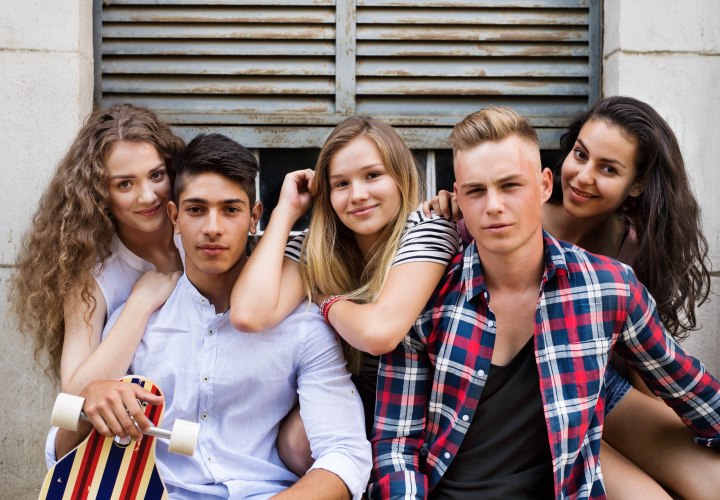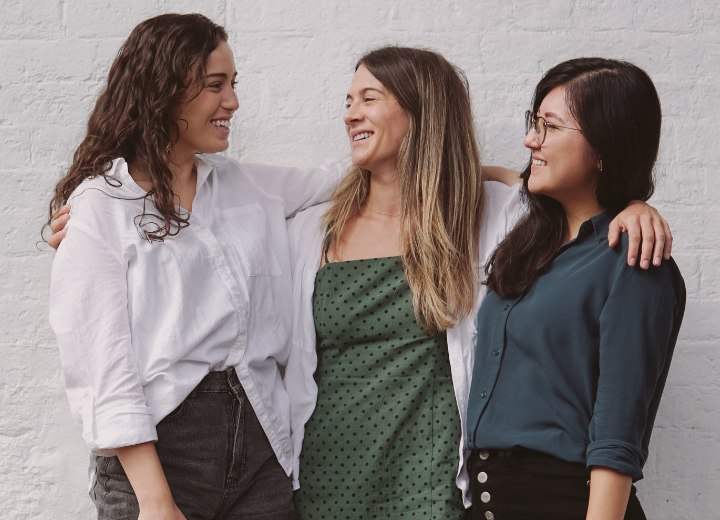Hair, Teenagers and Peer Pressure

One thing does, however, consistently stand out when you walk past a group of youths on the street: the way in which they all look the same, from the same trainers to the same jeans and coats, and especially the same hairstyles.
Teenagers' hairstyles are arguably one of the biggest indicators of this intense level of peer pressure and unwillingness to go against the fashion of a particular group of friends, or sometimes the whole school, for fear of falling out of popularity.
Youth Subcultures and Hair
While teenagers regularly use their hair, clothes, and makeup as a form of expression, it can rarely be called "self-expression" and should perhaps be re-named as "group-expression". A good example of this type of expression, which is unique to teenagers, was in the 1960s, when many teenagers, particularly in the United States, put flowers in their hair to represent love and peace and was meant to be seen as some kind of anti-war statement.
In the 1980s, many European youths dyed their hair bold and wonderful colors and donned equally bold haircuts to adapt to the punk movement that was sweeping its way across Europe at the time. Expressing views and visions through teenage hair is not confined to the West; today, in South Korea, many youths are choosing to color their hair to deliberately stand out and "collectively" look different.

Although there have been examples of more fear-provoking and radical subculture movements who used their hair as a tool to be conspicuous and invoke feelings of intimidation and fear in society, namely the skinheads, whose shaved heads raged riot through the streets of Great Britain in the 1960s.
Contemporary Culture and Teenage Hair
Today we live in a "celebrity culture," where there is an obsession with pop stars, TV personalities, and reality television, which enables untalented people to be lifted to the territories previously only accessible to actors and rock stars overnight. This obsession is so intense that people, particularly among impressionable teenagers, regularly scrutinize their favorite celebrity and copy any slight fluctuation in their choice of hairstyle.
There is also an amount of peer pressure operating today which involves which celebrity is considered "cool" and worthy of copying. For example, when Jade Goody appeared on the UK's Big Brother series and asserted her way into becoming a household name, teenagers across the nation, while excitedly talking about the last episode together at school on a Monday morning, would all show up the following day with their hair cut and colored the same as Jade Goody. The girl who most resembled Jade was the most admired.
Christina Aguilera and Britney Spears are two teenage idols who have inspired millions of teenage girls to have the same hairstyles, which consequently led to a classroom of 30 girls all looking like the American pop stars. Three of the most popular celebrities that teenagers are under pressure to look and have their hair like were Lindsey Lohan, Hillary Duff, and Brenda Song.
Continue reading ...
